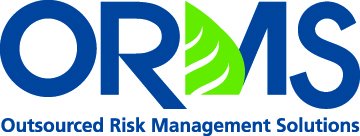Looking Back, Moving Forward
Looking Back, Moving Forward
As 2018 draws to a close, it’s instructive to look back on the past year and the impact various regulatory, political, and environmental changes had on commercial real estate risk management.
The year began with the Small Business Administration implementing the first revisions to its environmental guidance since 2014. Although this version of the SBA’s Standard Operating Procedure (SOP 50 10 5 (J)) did not include any monumental changes, it did contain some important clarifications affecting all CDC/504 and 7(a) commercial loans. These changes include: new Phase II environmental site assessment requirements for properties housing dry cleaning facilities, revised Records Search with Risk Assessment (RSRA) guidance stipulating that property use must be researched back to the property’s first developed use (or 1940, whichever is earlier), and an amended list of industries considered “environmentally sensitive.”
Read more about these important changes to the SBA’s SOP in our February 2018 blog.
The Environmental Protection Agency also released several significant updates to its guidance. Notable among these changes were new Phase I standards for forestland and rural property, mandating the use of ASTM International’s most recent standards for all closings completed on or after March 14, 2018. The revised 2016 standard updates some terminology from 2008, eliminates the 120-acre minimum property size requirement, and establishes a 20-day time limit for receipt of materials for the environmental consultant to review for completion of a Phase I.
The EPA’s latest Phase I standard also zeros in on the growing problem of vapor intrusion and requires an evaluation of any potential vapor encroachment to the subject property. Check out ORMS’ April 2018 blog for more on these and other regulatory actions.
On the topic of the EPA, the industry was abuzz with speculation about how the Trump Administration’s regulatory reform agenda would impact environmental risk management in commercial lending. Bottom line, despite a lot of proposals, not much has changed, at least not yet. Access our take on Trump’s EPA and what’s coming down the pike in ORMS’ May 2018 blog.
Regardless of federal government actions, the sad truth is that climate change is real, and it is already having a significant impact on commercial and residential real estate lending from coast to coast. Lenders must begin adjusting their risk management practices now to address this new reality. Find out how in our October 2018 blog.
I don’t have a crystal ball, but I will share a few predictions for 2019. On the regulatory front, I don’t anticipate any significant changes to current risk management guidance. One major trend I’m watching is the ongoing digital transformation that is affecting all areas of banking. In 2019, it will begin to take hold in commercial lending risk management, including both the environmental assessment and valuation areas, as more financial institutions adopt end-to-end loan origination systems. To fully capture the operational efficiencies and cost savings inherent in such systems, lenders must begin updating and streamlining their appraisal and environmental ordering, review, and assessment processes. It is no longer tenable for the risk management function to delay closings and absorb all the time and effort of loan operations staff.
2018 was a great year of growth for ORMS. We are immensely grateful to you, our loyal clients, business partners, and industry colleagues for all your support and patronage this past year. On behalf of Patrick, myself, and the rest of the ORMS team, we wish you a joyful New Year and a successful 2019!
